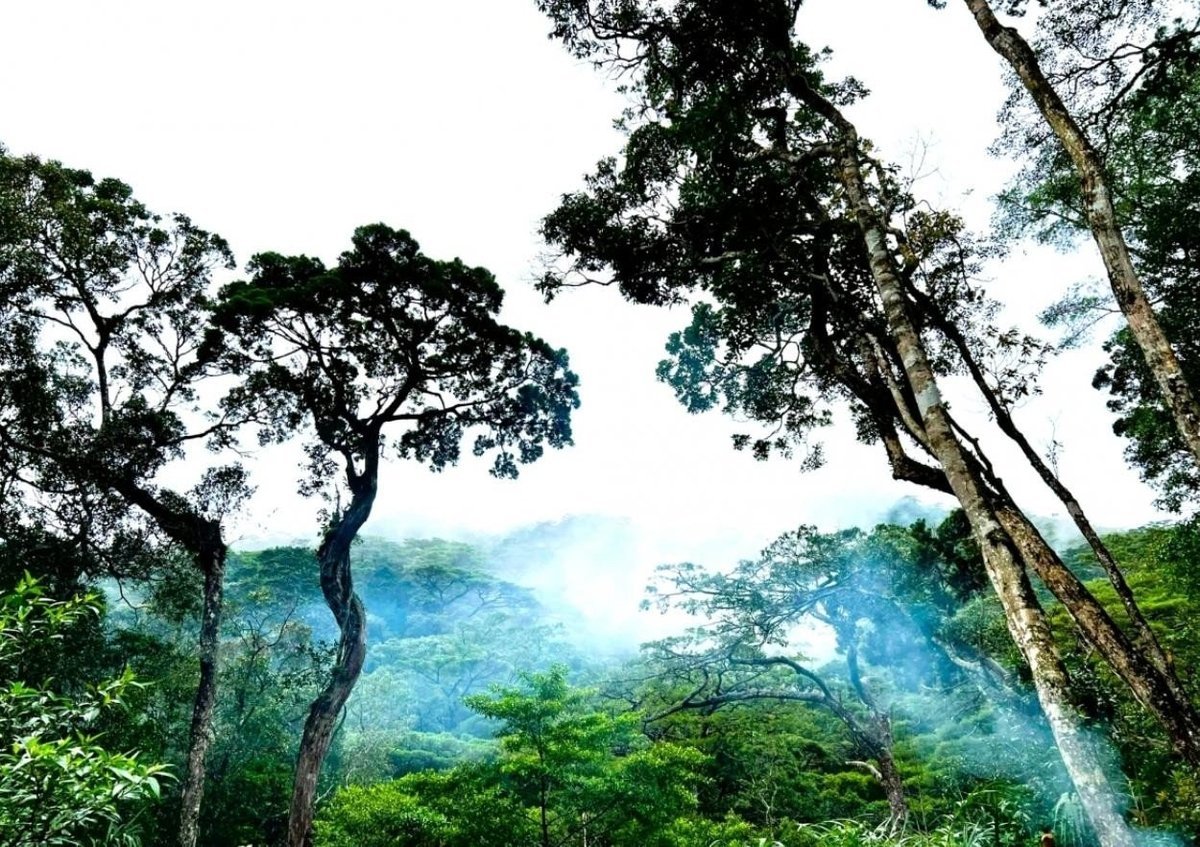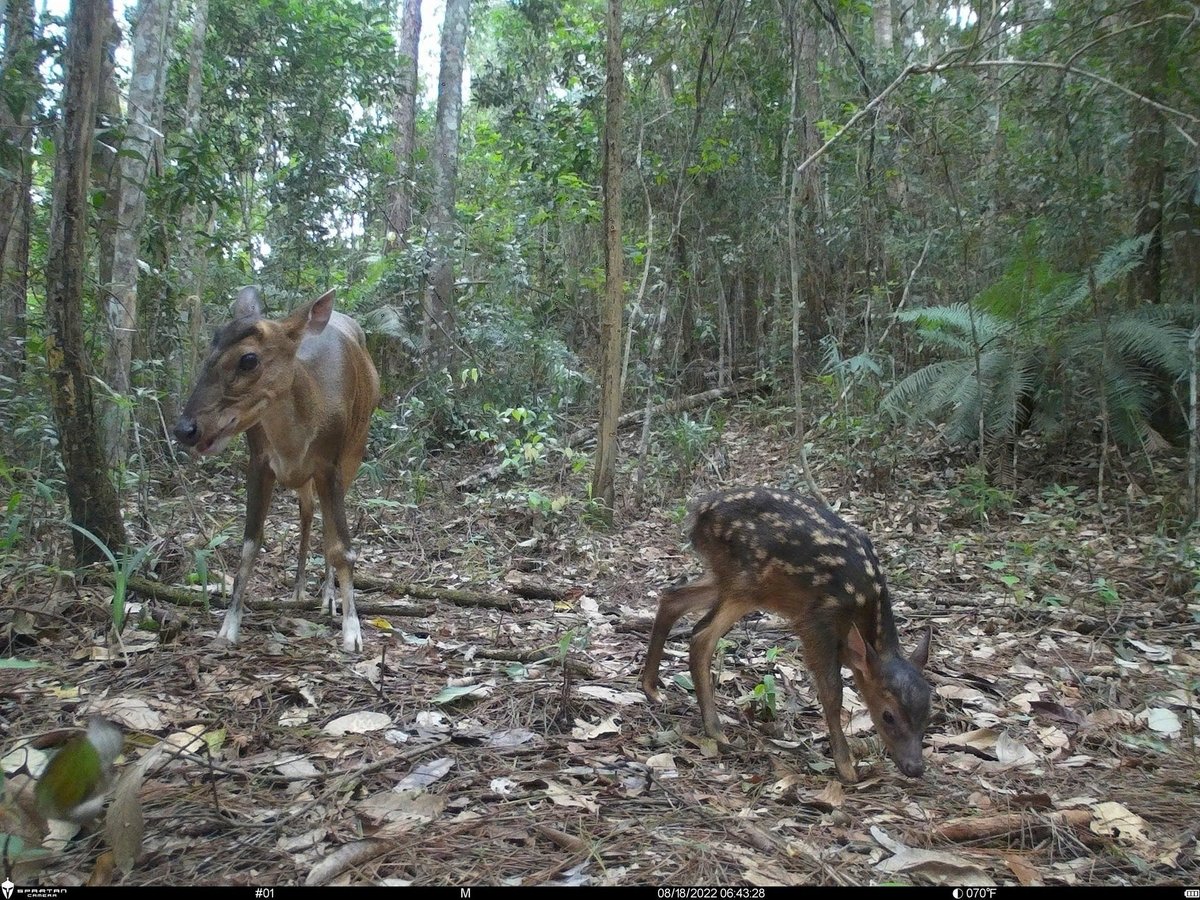October 31, 2025 | 10:26 GMT +7
October 31, 2025 | 10:26 GMT +7
Hotline: 0913.378.918
October 31, 2025 | 10:26 GMT +7
Hotline: 0913.378.918
Its headquarters are located in Hoa Son commune, Dak Lak province, and Chu Yang Sin National Park covers seven communes. Located in the transition zone between the Lang Biang Plateau and the Truong Son mountain range, it is a site where numerous distinct ecosystems intersect. The park extends over 59,484 hectares and boasts a diverse terrain that extends from 400 meters above sea level to the 2,442-meter-high Chu Yang Sin peak. A network of rivers and streams, highland grasslands, mixed broadleaf-conifer forests, subtropical coniferous forests, and tropical evergreen rainforests are among the major ecosystems. These regions are home to numerous endemic, rare, and scientifically valuable species of flora and fauna.

Located in the transition zone between the Lang Biang Plateau and the Truong Son mountain range, Chu Yang Sin National Park is a site where numerous distinct ecosystems intersect.
As Mr. Loc Xuan Nghia, the Director of Chu Yang Sin National Park, stated, the park is essential in providing ecosystem services, including regulating climate, protecting water resources, controlling erosion, conserving soil, and preserving ecological balance. It is also a valuable genetic source for the development of native plant varieties, forest restoration, and scientific research.
The park provides a variety of non-timber forest products, including medicinal herbs, bamboo, rattan, mushrooms, and honey, which are of economic value. It also possesses the potential for environmental education and ecotourism. Culturally, it is associated with the spiritual practices, daily life, and traditions of local ethnic groups, including the Ede and M'nong, and it is a significant component of folk art and festivals. Mr. Nghia stated that Chu Yang Sin National Park is an honor for the Central Highlands community.
Additionally, Mr. Nghia stated that research has demonstrated that the park has a high level of plant diversity, with 893 species in 147 families spanning six main plant groups: whisk ferns, ferns, flowering plants, conifers, clubmosses, and cycads.

A total of 109 vertebrate species in the park are considered endangered, endemic, or rare, including 41 mammals, 38 birds, 7 reptiles, 6 amphibians, and 17 fish species.
Magnoliophyta, the scientific name for the flowering plant category, is the most diverse, comprising 842 species and 126 families. Pteridophyta is a group of ferns that comprises 31 species in 13 families. Mr. Nghia stated that the Lycopodiophyta group comprises 14 species in four families.
A total of 189 endangered and rare plant species are present in Chu Yang Sin National Park, as listed in the IUCN Red List 2021, the Vietnam Red Data Book 2007, Decree 84, Decree 64, and the CITES Convention. The following are examples of such species: Fujian cypress (Fokienia), agarwood (Aquilaria), Sindora (Sindora), and Hopea (Hopea). The IUCN Red List 2021 lists 22 species as endangered, which accounts for 2.5% of the total plant species in the park. Cambodian cinnamon (Cinnamomum cambodianum) and agarwood are both considered critically endangered. The Vietnam Red Data Book 2007 lists sixty-three species, which account for 7.1% of the park's flora. One of these species is classified as critically endangered: the spiny acanthus (Acanthus ilicifolius). In addition, 16.5% of the park's total plant species are classified as IA and IIA under Decree 84, which encompasses 147 species.

Chu Yang Sin National Park is one of the most important centers of biodiversity in the Central Highlands and in Vietnam as a whole.
The majority of the endangered and rare plant species, including Siamese rosewood (Dalbergia cochinchinensis), incense cedar (Calocedrus), five-needle pine (Pinus dalatensis), and flat-leaved pine (Pinus krempfii), are present in multiple subzones, as per Mr. Loc Xuan Nghia. Mr. Loc Xuan Nghia stated, "We developed a distribution map of rare and threatened species in the park by conducting field surveys and coordinate recordings of endangered flora and fauna".
The Vietnam Academy of Agricultural Sciences published that in 2020, the park's flora inventory was expanded to include two species of wild banana: Yunnan banana (Musa itinerant) and wild banana (Musa balbisiana). This addition provided significant data to Vietnam's national plant database.
Furthermore, Chu Yang Sin National Park's animal population is exceedingly diverse and abundant. The survey yielded 481 vertebrate species in 122 families and 320 genera, including mammals, birds, reptiles, amphibians, and fish. The most diverse subdivision was birds, which contained 220 species, 146 genera, and 54 families.

The animal population of Chu Yang Sin National Park is exceedingly diverse and abundant.
A total of 109 vertebrate species in the park are considered endangered, endemic, or rare, including 41 mammals, 38 birds, 7 reptiles, 6 amphibians, and 17 fish species. Notable examples include the Sunda pangolin (Manis javanica), red-shanked douc langur (Pygathrix nemaeus), dhole or Asiatic wild dog (Cuon alpinus), large Indian civet (Viverra zibetha), leopard (Panthera pardus), large-antlered muntjac (Muntiacus vuquangensis), crested argus pheasant (Rheinardia ocellata), grey-cheeked tit-babbler (Mixornis flavicollis), king cobra (Ophiophagus hannah), oriental rat snake (Ptyas mucosa), spurred tree frog (Gracixalus quangi), and Bo lo river catfish (Boesemania microlepis).
“Chu Yang Sin National Park is one of the most important centers of biodiversity in the Central Highlands and in Vietnam as a whole. It plays a crucial role in nature conservation, sustainable development, and climate change adaptation. Protecting and enhancing the value of the park’s flora and fauna is not only of national significance but also contributes to global conservation goals”, Mr. Loc Xuan Nghia emphasized
Translated by Linh Linh

(VAN) This was the directive from Ho Chi Minh City People's Committee Chairman Nguyen Van Duoc regarding efforts to combat IUU fishing, especially ahead of an EC inspection delegation arriving in November.

(VAN) Using soil nutrient maps on mobile phones allows farmers to proactively manage field conditions and apply optimal farming practices.

(VAN) The collaboration between local agricultural extension forces and businesses is the foundation for effectively implementing the one-million-hectare high-quality, low-emission rice project.

(VAN) Minister Tran Duc Thang affirmed that the Ministry of Agriculture and Environment remains steadfast in its goal of green and sustainable development, laying the foundation for double-digit growth in the 2026-2030 period.

(VAN) Sustainable rice production requires a comprehensive soil management strategy, the application of technology, value chain linkages, and integrated economic, social, and environmental solutions.

(VAN) Kim Anh commune (Hanoi) is shifting to biosecure livestock farming to improve product quality and increase sustainable economic value.

(VAN) Early on October 30, all relief supplies from the Russian Federation arrived at Noi Bai Airport and immediately transported to Hue City during its peak of the flooding.